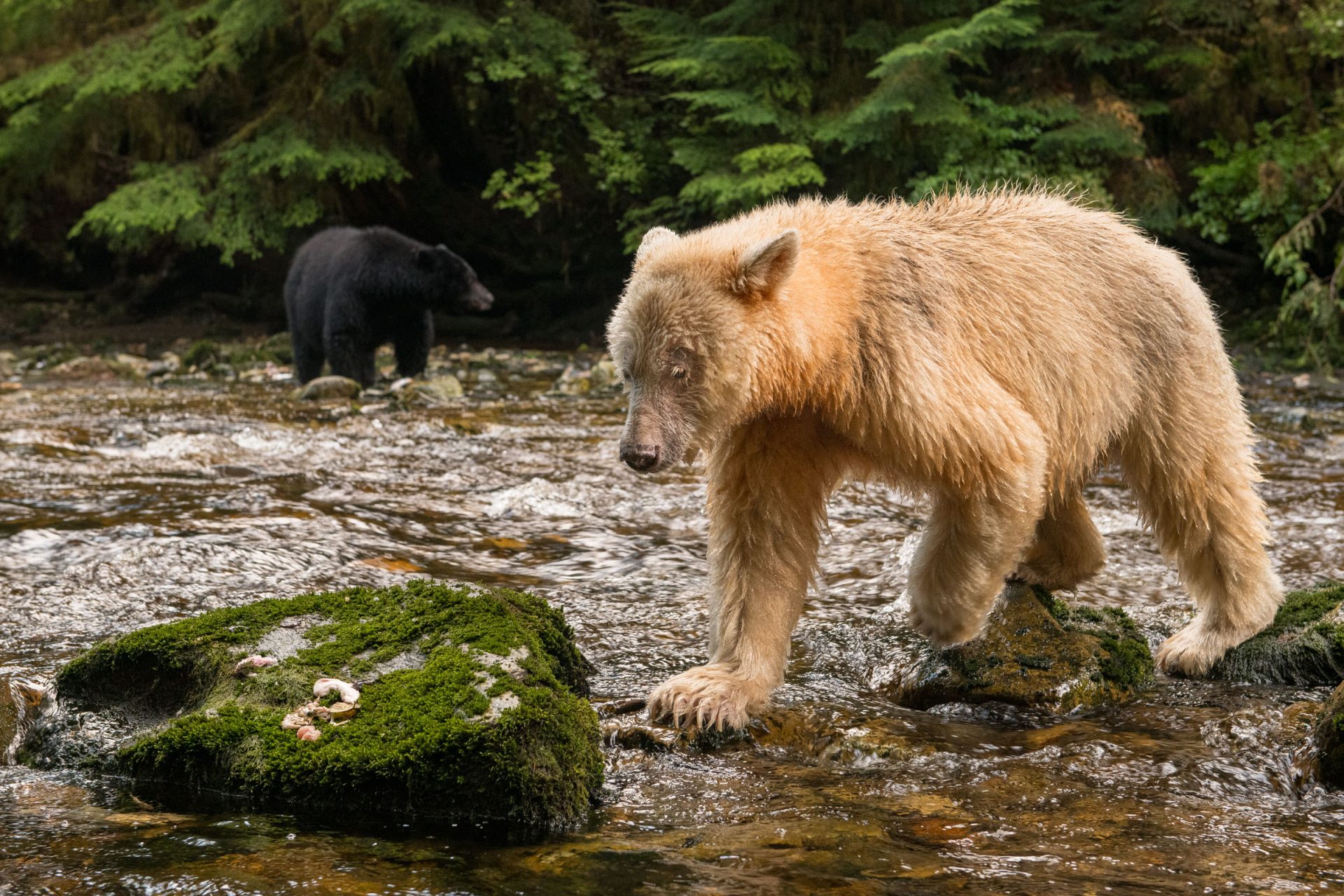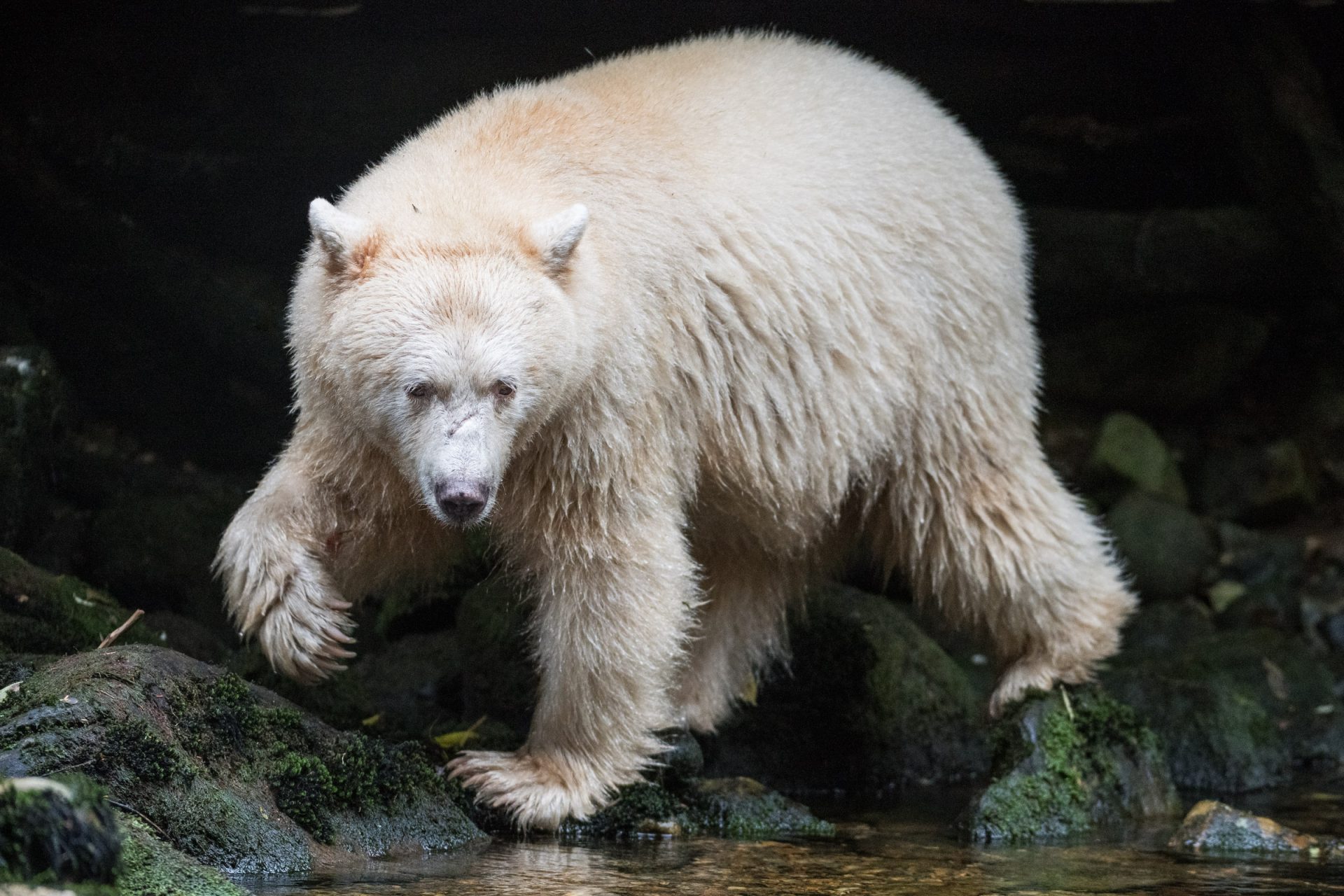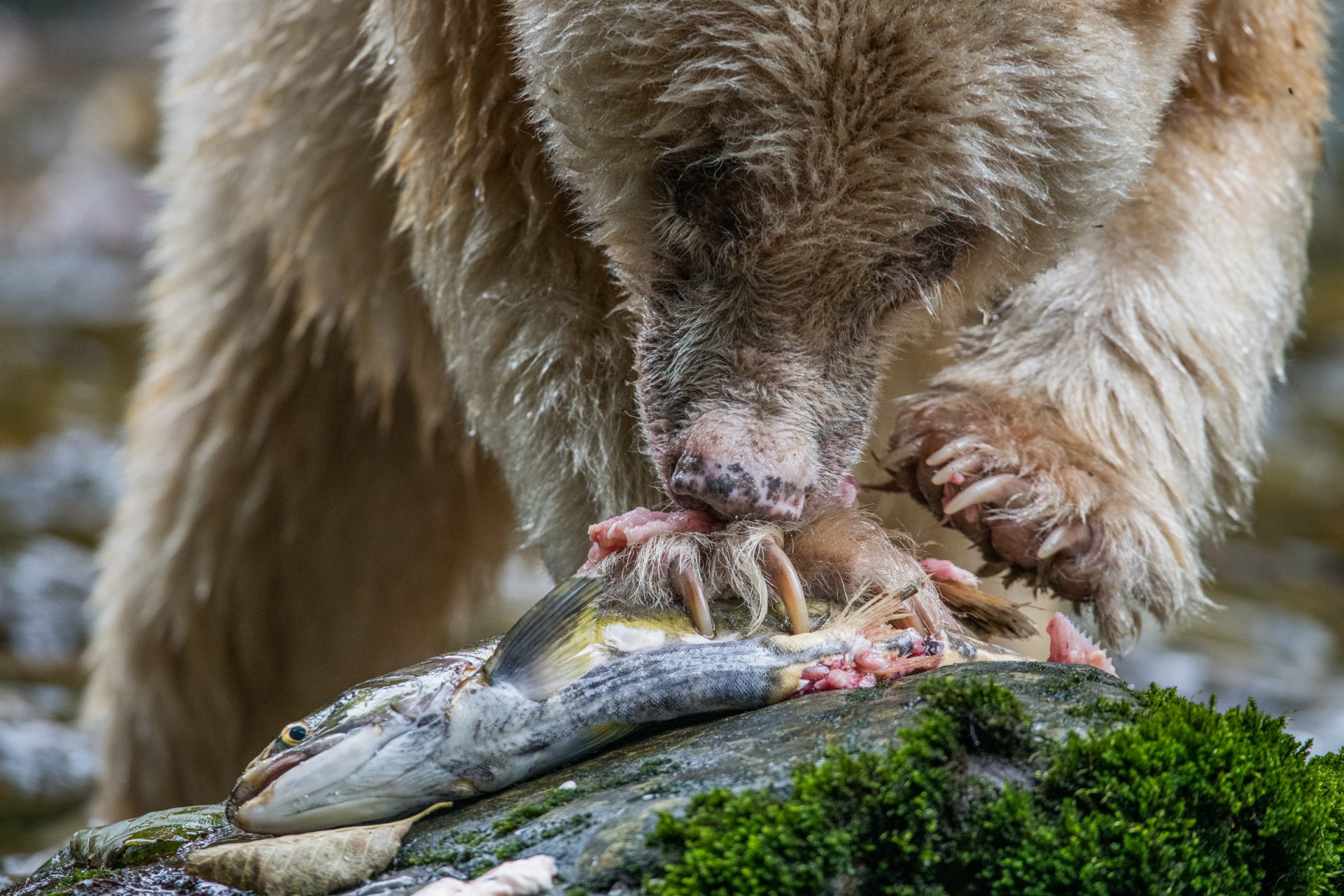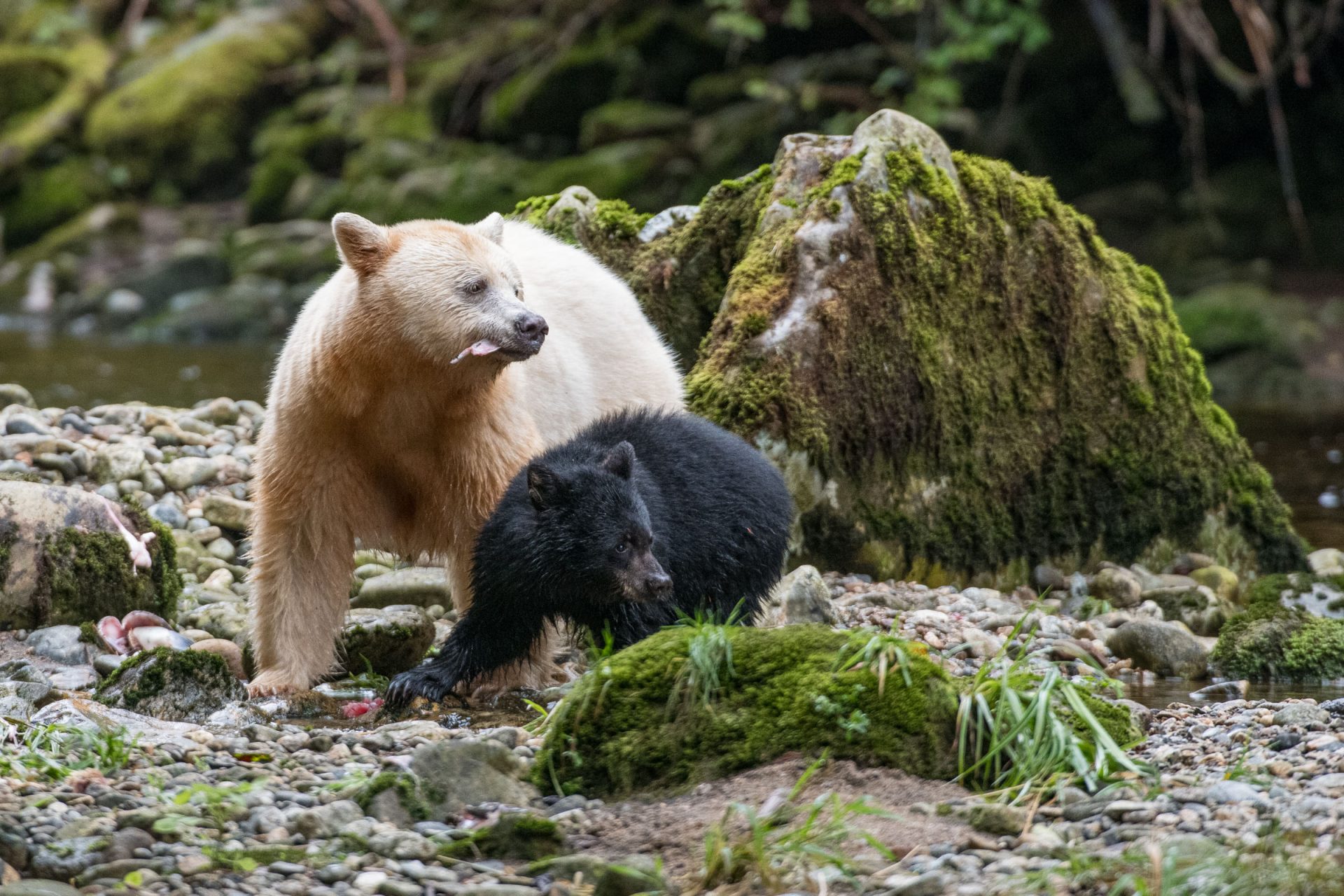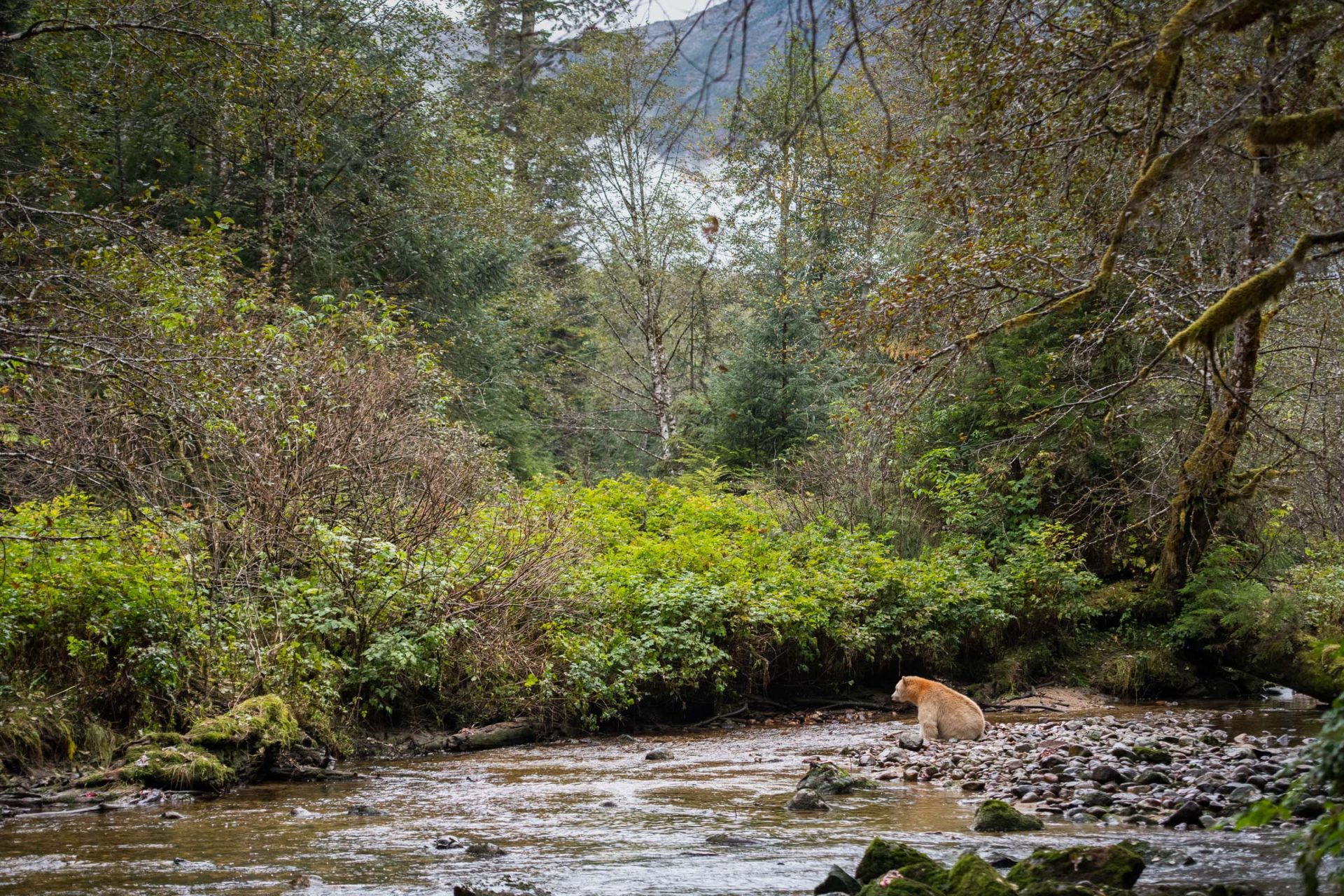01 | In Summary
Great Bear Rainforest
The survival of the spirit bear and other unique wildlife is at risk while protection of the Great Bear Rainforest remains incomplete and revenue sources that fund existing protection dry up. Mounting concern, particularly from First Nations, suggests the whole conservation framework and what has already been protected is at stake.
Environmental groups in British Columbia, Canada, are deeply concerned about the province’s failure to protect the Great Bear Rainforest, a critical ecosystem under threat.
The 2016 Great Bear Rainforest agreement, signed by the former BC Liberal government, First Nations, forest companies, and environmental organizations, aimed to safeguard this expansive region from the Discovery Islands to the Alaska panhandle. Spanning 6.4 million hectares, with over half covered by ancient forests, this pristine wilderness is a habitat for diverse species and holds cultural significance for local communities.
While progress has been made in designating approximately 85 percent of the world’s largest intact temperate rainforest as off-limits to logging, concerns persist regarding the remaining unprotected areas. The reserve plans for these regions, particularly in the most vulnerable parts of the rainforest, were due for completion two years ago. Yet, the province still needs to provide a clear strategy for its protection.
In addition to the immediate threat of logging, in March of 2023, the Cedar LNG facility, expected to produce about 3 million tonnes of liquefied natural gas a year, was approved. For Haisla Nation elders the “one of the greatest examples of economic reconciliation” and “historic.” For others, including members of the Gitga’at Nation, their “home” is now, more than ever, feeling the pressure of development.
Furthermore, the revenue sources that fund the existing protection of the Great Bear Rainforest are already smaller than expected as “carbon offset” sales, a primary source of funding, remain low. In short, the whole conservation framework built over the last ten years is at risk, say some experts.
Rising temperatures, shifting precipitation patterns, and other climate-related factors compound the challenges of protecting this delicate ecosystem. These changes could have severe implications for the spirit bear and other species dependent on the intact rainforest for survival.
Ensuring the ecological health and resilience of the Great Bear Rainforest requires urgent attention and protection for the remaining 1.5 million hectares, equivalent to half the size of Vancouver Island. Swift development of reserve plans for these areas is crucial.
Neglecting this task would jeopardize the survival of the spirit bear and other wildlife and undermine the province’s commitment to address climate change and protect this globally significant ecosystem.
Keywords: British Columbia, Canada; Climate crisis; culture; Great Bear Rainforest; Indigenous
02 | Photography





